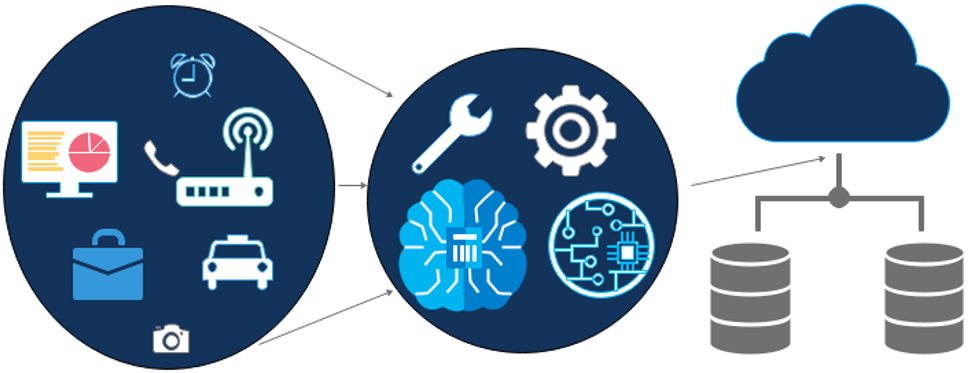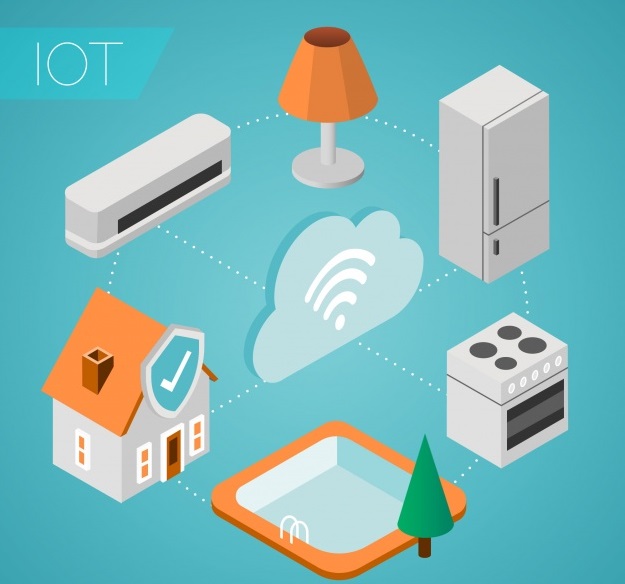Cloud computing is a term that refers to the delivery of computing resources and services over the internet.
It enables organizations to access and use computing resources, such as storage, processing power, and software, on-demand and without the need to invest in and maintain their own infrastructure.
By leveraging cloud technology, organizations can realize many benefits such as cost savings, scalability, flexibility, improved collaboration and increased agility.
The unfortunate conception!
There is a perception among some manufacturing organizations that cloud computing is not as secure as on-premises solutions and that there is a lack of control over their data when it is stored in the cloud.
Additionally, some organizations may be concerned about regulatory compliance when using cloud services and the potential for data breaches or other security incidents.
To address these concerns, cloud vendors have invested heavily in security and compliance measures to ensure that their services meet industry standards and regulations.
They also provide detailed documentation and transparency around their security practices and incident response plans.
However, building trust between manufacturing organizations and cloud vendors is a process that requires ongoing effort and communication.
Cloud vendors must continue to demonstrate their commitment to security and compliance, while also providing a high level of customer support and service.
Manufacturing organizations, on the other hand, need to educate themselves about the security and compliance measures in place, and perform due diligence in the selection of a cloud vendor that aligns with their specific needs.
Additionally, they should have a clear understanding of the regulatory requirements that apply to their industry and ensure that the vendor’s offering meets those requirements.
Cloud vendors, meanwhile, must continue to prioritize security and compliance to build trust with their customers and provide the level of service and support that is needed to foster long-term relationships.
Cloud compliance refers to the process of ensuring that an organization’s use of cloud computing services conforms to legal, regulatory, and industry standards.
Compliance with these standards helps organizations protect sensitive data and maintain the trust of their customers and stakeholders.
By ensuring cloud compliance, organizations can create value in several ways:
1. Protection of sensitive data: Compliance with regulations such as HIPAA, SOC 2, and PCI DSS helps organizations protect sensitive data such as personal information, financial data, and healthcare records. This can prevent data breaches, which can be costly and damaging to an organization’s reputation.
2. Mitigation of legal and regulatory risks: Compliance with laws and regulations such as GDPR and CCPA can help organizations avoid costly fines and legal penalties.
3. Building trust with customers and stakeholders: Compliance with industry standards and regulations demonstrates to customers and stakeholders that an organization takes data security and privacy seriously. This can help build trust and confidence in the organization’s services.
4. Improved incident management: Compliance with regulations such as ISO 27001 can help organizations establish effective incident management processes, which can help minimize the impact of security incidents and data breaches.
5. Streamlined compliance reporting: Adopting cloud services, such as Software as a Service (SaaS) can help organizations automate compliance reporting, which can help reduce the burden of compliance on IT teams.
Cloud compliance creates value for organizations by protecting sensitive data, mitigating legal and regulatory risks, building trust with customers and stakeholders, improving incident management and streamlining compliance reporting.
Organizations should conduct regular assessments to ensure their cloud computing services are compliant with relevant laws, regulations, and industry standards.

Organizations that are not taking full advantage of cloud technology, should consider how cloud computing can benefit their business and address any concerns they may have about security and compliance.
They should also consider partnering with a reputable cloud vendor who can provide the necessary support and guidance to help them successfully implement and manage their cloud infrastructure.
Another important factor to consider is the development of a clear cloud strategy that aligns with the organization’s overall business objectives.
This should include an assessment of the current IT infrastructure, a plan for migrating applications and data to the cloud, and a clear understanding of the resources and services that will be needed to support the organization’s operations.
Additionally, organizations should also consider how they can leverage the power of IoT and big data to capture, analyze, and act on the vast amounts of data generated by their operations.
This can help improve decision-making, optimize production processes, and reduce downtime.
Cloud computing can deliver tremendous amounts of business value to organizations, but it requires a strategic approach and a willingness to embrace change. Organizations that are able to do this, can reap the benefits of cloud computing and gain a competitive advantage in the marketplace.
Today, almost every manufacturing customer that is digitally transforming becomes partly a software company.
This is because digital transformation in manufacturing involves the integration of advanced technologies such as software, cloud services, data analytics, and artificial intelligence into traditional manufacturing operations.
These technologies enable manufacturers to improve efficiency, increase productivity, and gain insights from data to make better decisions.
By incorporating software into their operations, manufacturers can automate and streamline processes, improve communication and collaboration within the organization, and gain access to advanced analytics tools to make data-driven decisions.
Additionally, the use of cloud services allows manufacturers to access powerful computing resources and scale up or down as needed, while also providing flexibility and cost savings.

By becoming a “software company,” manufacturers are able to better compete in a rapidly changing industry, stay ahead of emerging trends and technologies, and drive innovation to improve their operations and remain competitive.
Technical advancements, the adoption of cloud services, data analytics, and artificial intelligence will accelerate this phenomenon.
The integration of these advanced technologies is driving the digital transformation in manufacturing and will continue to accelerate the trend of manufacturers becoming “software companies.”
Technical advancements such as the Internet of Things (IoT), Industry 4.0, and 5G networking are enabling manufacturers to connect and collect data from a wide range of devices and equipment, providing a wealth of data for analysis and decision-making.
The adoption of cloud services allows manufacturers to store, process, and analyze this data at scale and with greater efficiency. They can also leverage advanced analytics and machine learning tools to gain insights and improve decision-making, optimize operations, and drive innovation.
Artificial intelligence (AI) and machine learning (ML) are also becoming increasingly important in manufacturing. They enable manufacturers to automate processes, improve prediction and forecasting, and make real-time decisions based on data analysis.
Overall, these technological advancements and the adoption of cloud services, data analytics, and AI are allowing manufacturers to become more efficient, innovative, and competitive, and will continue to shape the manufacturing industry in the coming years.
With increasing customer collaboration comes more questions regarding who owns specific patents and the resulting intellectual property (IP).
As customers collaborate with Cloud hosting companies to develop new technology and solutions, there may be confusion or uncertainty about who owns the resulting intellectual property (IP) and the rights to use it.
This can create potential legal and financial risks for both parties and can also hinder future innovation and collaboration.
To address these concerns, many Cloud providers, have developed principles and guidelines for co-created technology and IP. These principles are designed to provide transparency, fairness and clarity in the ownership and use of IP generated through collaboration.
For example, the principles may include: Clarity of ownership, Fairness in licensing, Transparency in use, Respect for customer’s IP. These principles can provide both parties with a clear understanding of who owns the IP, the terms of use, and the rights to commercialize it.
By establishing clear and fair principles for co-created technology and IP, companies can build trust with their customers, mitigate legal and financial risks, and foster future innovation and collaboration.
Looking for End to End Industrial Automation & IoT Solutions?





















